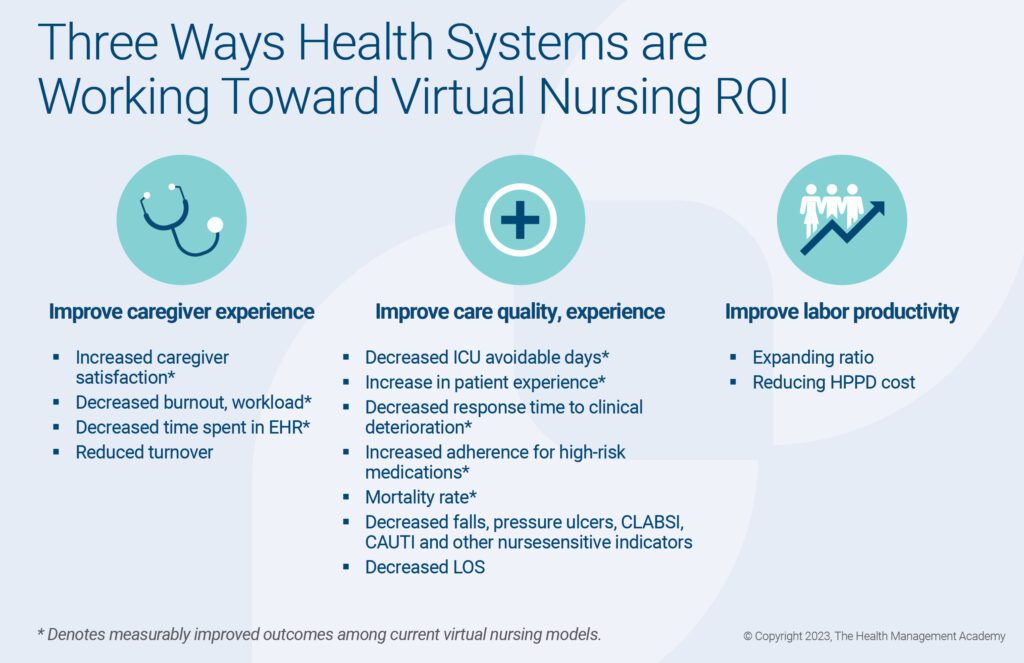What Chief Nursing Officers and Chief Human Resource Officers are Prioritizing in 2023: Insights for Nurse Leaders
As we all know, rising costs coupled with slowing revenue are resulting in operating margin challenges for health systems. These headwinds are expected to prevail in 2023, impacting health systems’ ability to grow.
The Health Management Academy recently held three days of strategic forum discussions with Chief Nursing Officers and Chief Human Resource Officers from leading health systems to discuss challenges and opportunities to address in 2023. Nurse leaders can align with the shared strategic priorities of this group through four key insights arising from the conversation.
Insights for Nurse Leaders on Strategic Priority 1: Consider Investing in Tech and Leadership Infrastructure
CHROs & CNOs agreed current recruitment models are not built to support present and future workforce demands, forcing leaders to reimagine the recruitment process through better analytics. Health systems also noted they need to invest in the correct infrastructure and leadership team to execute future recruitment efforts and identify current bottlenecks in the process.
“We can’t afford to staff all of our vacant positions. It’s time to restructure for the new normal.”
– CHRO, Leading Health System
Insights for Nurse Leaders on Strategic Priority 2: Determining the ROI of Virtual Nursing Pilots
Inpatient virtual nursing pilots are top of mind for CNOs as well as nurse leaders. CNOs are looking to experiment with care team redesign. Some questions CNOs are still trying to answer around virtual nursing include single unit assignments vs. capacity-based assignments, securing buy-in from staff, and making the case for investment to the C-suite, particularly Chief Financial Officers (CFOs).


Insights for Nurse Leaders on Strategic Priority 3: Reimagining Retention Strategies for the Entire Workforce
Retention remains a key performance metric, with CHROs reimagining benefit offerings and flexibilities to improve work-life balance among staff. Nurse leaders should consider, however, that CHROs are trying to balance retention strategy with financial realities. Notably, many CHROs are facing challenges to streamline pay structures for specialty roles (e.g., anesthesia) and roles that are difficult to fill (e.g., IP Nurse).
Workforce leaders understand that creating career ladders and professional development opportunities can’t be one-size fits all. For example, CHROs are focused on promoting equitable opportunities across care settings and titles/roles (not just nurses). CNOs are focused on retaining bedside nurses – one health system created a 5th nursing level in their career ladder to support nurses with advanced degrees.
Insights for Nurse Leaders on Strategic Priority 4: Examining the Impact of C-Suite Turnover
Workforce needs are evolving in terms of the types of skills and roles needed to deliver consumer-centric, tech-enabled care. In some cases, this means evolving roles and responsibilities across the C-suite, a reshuffling of management teams each time a new CEO comes onboard, or a replacement needed for a departed CEO. Nurse leaders should take note that, as a result, leading health systems are prioritizing succession planning for their C-suite to avoid a stalemate in strategy.
- Seventy-nine percent of health systems are not routinely conducting succession planning for their C-suite.
- CEO departures ripple through the organization, within one year of CEO change, many C-suite members will leave or be replaced.
Learn more about Nursing Catalyst. Learn more
